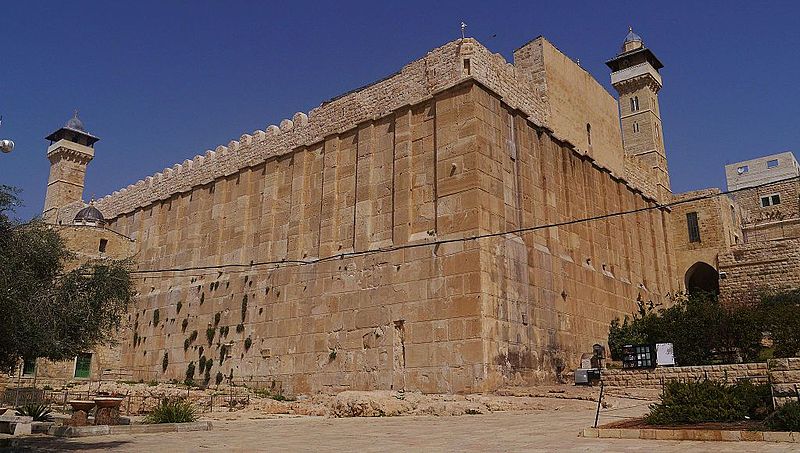27 Jan. Abraham dies and is buried at Hebron
"Abraham married again [after Sarah's death], and his new wife was Keturah. She gave birth to Zimran, Jokshan, Medan, Midian, Ishbak and Shuah…"
"Abraham left everything he owned to Isaac. But before Abraham died, he did give gifts to the sons of his other wives, then sent them to the east away from Isaac."
"Abraham lived to be 175 years old. He breathed his last breath and died at an old age, after a long and satisfying life. His sons Isaac and Ishmael buried him in the cave of Machpelah in the field of Ephron east of Mamre [at Hebron]."
"So Abraham was buried with his wife Sarah in the same field that he had bought from the Hittites. After Abraham died, God blessed his son Isaac. Isaac was now living at Beer Lahai Roi."
(Genesis 25:1-11)

Abraham – who had married Keturah after the death of Sarah, and had fathered six more sons - died in c.1815BC, "at an old age, after a long and satisfying life." (Genesis 25:8)
He was buried in Machpelah Cave near Hebron (bought by Abraham from Ephron the Hittite as a burial place for his wife Sarah - see Genesis 23:9). Other members of Abraham’s family who were buried here included his son Isaac and his daughter-in-law Rebekah. His grandson Jacob and his wife Leah were also buried here (see Genesis 23:1-20, 25:9, 49:29-32 & 50:12-13).
Hebron is the second holiest city in Judaism after Jerusalem, as three generations of the founding fathers of Judaism, Abraham, Isaac and Jacob – known as ‘the Patriarchs’ – are buried here. The city is also regarded as holy by followers of both Christianity and Islam, and many synagogues, churches and mosques have been built here to commemorate the lives of the three Patriarchs.
Abraham’s tomb can still be visited at Hebron. In the 1st century BC, King Herod the Great built a high, fortified wall around the 'Tomb of the Patriarchs' (the Haram el-Khalil) which still stands today.
A Christian church built by the Byzantine Emperor Justinian I over the Cave of Machpelah in the 6th century was destroyed in the following century. But a Crusader church, built over the site of the tomb in the 12th century was later converted into the Mosque of Abraham that can still be visited today. The sanctuary is currently shared by Jews and Muslims.
Other sites that can be visited at Hebron include Abraham’s Well and the Oak of Mamre, 1 mile / 2 km west of Hebron at nearby Khirbet es-Sibte where a Russian Orthodox church and monastery commemorate the spot where it is believed Abraham pitched his tent (see Genesis 18:1).
The photo (by Zairon) shows the Tomb of the Patriarchs at Hebron.
You can read more about Hebron @ https://www.thebiblejourney.org/biblejourney2/23-the-journeys-of-adam-enoch-noah-abraham/abraham-dies-at-hebron/
